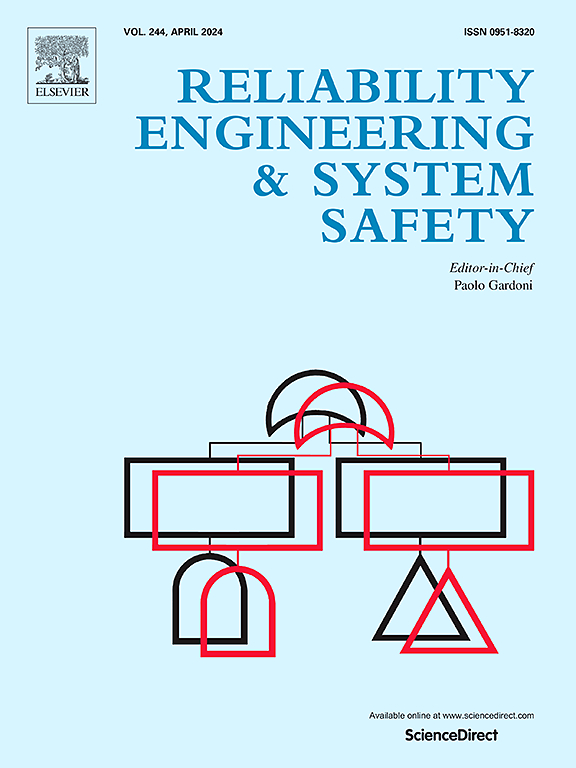A novel reliability method for assessing dam slope stability by incorporating intrinsic correlations of rockfill materials
IF 9.4
1区 工程技术
Q1 ENGINEERING, INDUSTRIAL
引用次数: 0
Abstract
Recently, slope reliability analysis based on probabilistic theory has advanced, most of which treat material properties solely as independent variables. However, the physical and mechanical parameters of rockfill are highly interrelated, ignoring these correlations can yield in inaccurate assessments of slope stability. Therefore, a novel method incorporating intrinsic correlation between material parameters for slope reliability analysis is proposed. Initially, the statistical characteristics of 36 rockfill dams in China are analyzed to determine the best marginal distribution for each Duncan-Chang E-B model parameter using the Akaike Information Criterion. The Kendall rank correlation coefficient is then used to reveal the relationships between the parameters, based on which a multidimensional joint probability model can be established by vine copula. Finally, the surrogate model of the performance function is developed, facilitating the slope reliability analysis that incorporates intrinsic correlations. The method is applied to the DL high rockfill dam, and results indicate that neglecting intrinsic correlations increases the slope failure probability and reduces the dam slope stability, resulting in overly conservative designs. In contrast, considering interrelationships provides a more accurate representation of practical scenarios and avoids the parameter distortion.
求助全文
约1分钟内获得全文
求助全文
来源期刊

Reliability Engineering & System Safety
管理科学-工程:工业
CiteScore
15.20
自引率
39.50%
发文量
621
审稿时长
67 days
期刊介绍:
Elsevier publishes Reliability Engineering & System Safety in association with the European Safety and Reliability Association and the Safety Engineering and Risk Analysis Division. The international journal is devoted to developing and applying methods to enhance the safety and reliability of complex technological systems, like nuclear power plants, chemical plants, hazardous waste facilities, space systems, offshore and maritime systems, transportation systems, constructed infrastructure, and manufacturing plants. The journal normally publishes only articles that involve the analysis of substantive problems related to the reliability of complex systems or present techniques and/or theoretical results that have a discernable relationship to the solution of such problems. An important aim is to balance academic material and practical applications.
 求助内容:
求助内容: 应助结果提醒方式:
应助结果提醒方式:


